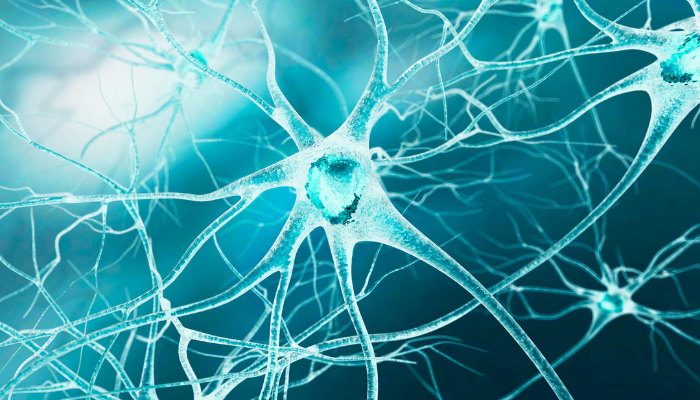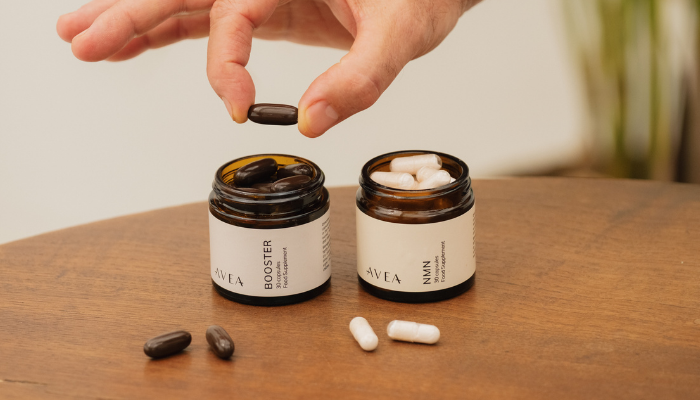Inflammation is your body’s built-in emergency response. It provides defences against injury or infection, kickstarting the healing process.
But what happens when this emergency mode never switches off?
Imagine a fire alarm that keeps sounding, long after the fire is out – that’s #chronicinflammation for you.
Whilst short-term inflammation, like the redness from a mosquito bite or the swelling around a scrape, is a vital, fleeting reaction, chronic inflammation overstays its welcome.
This persistent state can lead to significant tissue damage, and is a major culprit behind conditions like type 2 diabetes, autoimmune disorders, cancer, and more.
This brings in another sinister player in this saga: cellular senescence. How does this silent saboteur link with chronic inflammation, and what does it mean for your health and longevity?
Keep reading to uncover the surprising connections that could change how we understand ageing and disease prevention.
In this article
Free guide to reverse your biological age

- Master the science of rejuvenation.
- Apply proven tips to turn back the clock.
- Transform your health with top longevity specialists.
What is ageing?
Ageing is a complex process that impacts us at every level—molecular, cellular, tissue, and systemic. It’s a process that begins from the moment we are born.
However, the build-up of damage and a decline in our body’s repair mechanisms, eventually lead to age-related diseases.
As we age, we become more susceptible to chronic diseases, which significantly affect our health and lifespan.
Scientists have identified 12 hallmarks of ageing, including
- genomic instability
- telomere shortening
- epigenetic changes
- loss of protein maintenance
- nutrient sensing issues
- mitochondrial dysfunction
- cellular ageing
- stem cell depletion
- altered cell communication
Recently, they added three more: problems with cell recycling (disabled macroautophagy), imbalances in gut bacteria (dysbiosis), and chronic inflammation (inflammaging). These hallmarks interact in a complex web, influencing each other.
Chronic inflammation, or inflammaging, is particularly significant as it impacts every ageing hallmark. Unlike short-term inflammation from an injury or infection, inflammaging is persistent and harmful.
Is chronic inflammation ageing you faster?
Everyone ages differently due to unique genetic make-up and life experiences.
This individuality, known as the “exposome,” encompasses all the exposures a person encounters throughout their life, shaping their unique ageing process.
Our immune history, or “immunobiography,” is also unique, influenced by the various pathogens we’ve encountered throughout life.
Reverse your age by 6.5 years like Ibrahim

- Explore the secrets behind Ibrahim’s transformation.
- Discover simple, proven strategies to improve vitality.
- Understand the role of supplements in reversing biological age.
Ageing and immunosenescence
Immunosenescence is now understood as a highly dynamic and multifactorial process. It refers to the changes that occur in our immune system as we age.
Whilst some immune functions decline sharply with age, others may be maintained or even increase.
Initially, scientists believed these changes were solely harmful, making us more prone to infections, cancer, and less responsive to vaccines.
However, recent research suggests that not all changes in the ageing immune system are negative. Some may even be adaptive, helping our bodies respond better under certain conditions.
Key changes in the immune system with age
- Naïve and Memory T Cells: As we age, the number of naïve T cells (which respond to new infections) decreases, whilst the number of memory T cells (which remember past infections) increases. This shift can reduce our ability to fight new infections, but helps us respond faster to previously encountered pathogens.
- Epigenetic and metabolic changes: Ageing causes changes at the genetic and metabolic levels, affecting how our immune cells function. There’s a shift in the production of immune cells from the bone marrow, with fewer new T and B cells being produced. Thus, a decreased ability to respond to new infections and a slower recovery from illnesses.
- Chronic antigenic stimulation: Long-term exposure to infections, like the common virus CMV, forces our immune system to keep fighting, leading to a state of exhaustion in our T cells.

What’s the difference between a healthy and an aged immune system?
Thymus involution: The thymus, where T cells mature, shrinks with age, reducing the production of new naïve T cells. A lower diversity in the T cell population hampers the immune system’s ability to recognise and respond to a wide array of pathogens.
Memory T cell accumulation: With repeated exposure to pathogens, older adults accumulate more memory T cells, but these cells can become exhausted over time.
B cells: Ageing also affects B cells, which produce antibodies. The number of B cells decreases, and their ability to produce effective antibodies declines, contributing to weaker immune responses.
What is inflammaging?
Inflammaging refers to the low-grade, chronic inflammation that contributes to weaker immune responses to new and familiar infections and is associated with an increase in inflammatory markers.
Impact of inflammaging on health
Over the past decade, research has shown that inflammaging is linked to various age-related diseases, including:
- Atherosclerosis and cardiovascular diseases
- Type 2 diabetes and metabolic syndrome
- Osteoporosis and cognitive decline
- Neurodegenerative diseases like Alzheimer’s and Parkinson’s
- Frailty and overall functional decline
The link between inflammaging and immunosenescence
Inflammaging and immunosenescence (the ageing of the immune system) are closely related.
The factors that cause chronic inflammation also contribute to immunosenescence, and vice versa. This cycle maintains a state of persistent inflammation and immune system decline.

Key features of inflammaging at cellular level
- Pro-inflammatory cytokines: Increased levels of cytokines like IL-6, which are linked to various inflammatory diseases and conditions such as osteoporosis and sarcopenia (muscle loss).
- Acute phase proteins: Elevated levels of proteins like CRP (C-reactive protein) and mannose-binding lectin, which indicate ongoing inflammation.
What causes inflammaging?
- Cell senescence (SASP): Senescent cells, which no longer divide, release inflammatory substances contributing to chronic inflammation.
- Microbiome imbalance: Changes in the gut microbiome, where harmful microbes outnumber beneficial ones, can enhance inflammation.
- Trained innate immunity: The innate immune system, which is our first line of defence, can remain in a state of chronic activation due to repeated exposures and metabolic changes. While this can improve responses to some infections, it can also lead to persistent inflammation.
- Mitochondrial changes: As we age, mitochondria (the energy producers in cells) can produce more free radicals and release damaged components, triggering inflammatory responses.
Managing inflammaging
Understanding the causes and impacts of inflammaging can help in developing strategies to manage it.
Lifestyle changes such as a balanced diet rich in anti-inflammatory foods, regular physical activity, and stress management can reduce inflammation.
Ongoing research is exploring potential therapies like longevity supplements to target chronic inflammation. The Avea Essentials is a must-have for anyone looking to combat inflammation and enhance their overall health.
The best anti-inflammatory supplements

- Address common nutrient deficiencies like Magnesium, Omega-3, and Vitamin D.
- Support immune and overall health.
- Enhance your energy and vitality.
Packed with potent anti-inflammatory ingredients like Omega-3, Vitamin D3 & K2, Magnesium, and Zinc, this daily supplement is designed to address common deficiencies that can contribute to chronic inflammation.
Omega-3 fatty acids are well-known for their ability to reduce inflammatory markers and improve heart health, whilst Vitamin D supports the immune system and helps regulate inflammatory responses.
Magnesium plays a crucial role in muscle relaxation and can reduce inflammation at a cellular level. Together, these powerful nutrients provide comprehensive support to keep inflammation in check.
What is cellular senescence?
Cellular senescence is a state where cells permanently stop dividing but remain metabolically active. These cells are often called “zombie cells.”
Senescent cells exhibit changes like macromolecular damage, altered metabolism, and a specific secretory profile. In a nutshell, they are no longer functioning normally.
But, senescence is not synonymous with ageing. It’s a process that occurs throughout life, contributing to tissue development, repair, and tumour suppression.
The issue occurs when there’s an accumulation of senescent cells. Markers of senescence include increased activity of certain enzymes (like SA-βgal), larger cell size, altered nuclear structure, and high levels of reactive oxygen species (ROS) due to mitochondrial dysfunction.
Causes of cellular senescence
Senescence can be triggered by various stress signals, including:
- DNA damage: Exposure to UV radiation, smoking, and environmental pollutants can cause DNA damage, activating a response that halts cell division.
- Telomere shortening: Chronic stress and lack of sufficient sleep can accelerate the shortening of telomeres, the protective ends of chromosomes, leading to senescence.
- Mitochondrial dysfunction: Poor diet, lack of exercise, and exposure to toxins can damage mitochondria, causing them to produce harmful molecules and contribute to cellular stress.
- Oncogene activation or loss of tumour suppressors: Poor lifestyle choices, such as excessive alcohol consumption and lack of regular medical check-ups, can lead to changes in genes that regulate cell growth, triggering senescence.
- Nutrient deprivation, hypoxia, and epigenetic changes: Inadequate nutrition, living in polluted environments, and chronic stress can lead to nutrient deprivation, low oxygen levels (hypoxia), and epigenetic changes, pushing cells into senescence.
What is Senescence-Associated Secretory Phenotype (SASP)?
A key feature of senescent cells is the Senescence-Associated Secretory Phenotype (SASP). SASP includes the secretion of pro-inflammatory cytokines, chemokines, growth factors, and other molecules that contribute to chronic inflammation. The composition of SASP varies based on the type of senescence trigger, duration, and cell environment.
How does senescence lead to chronic inflammation and vice versa?
There is a close association between chronic inflammation and cellular senescence.
Senescent cells release SASP factors that create a pro-inflammatory environment, contributing to age-related diseases, frailty, and mortality.
The inflammatory molecules secreted by senescent cells trigger more cells to become senescent. This creates a vicious cycle where senescence causes inflammation, and inflammation, in turn, causes more senescence.
This process is exacerbated when neighbouring cells become senescent, spreading the senescent state through tissues—a phenomenon known as bystander senescence.
This perpetuates the cycle, leading to widespread tissue dysfunction and chronic inflammation.
Impact of cellular senescence on the immune system
Senescent cells accumulate in various tissues as we age, leading to functional decline. In the immune system, senescence affects both innate and adaptive immunity, impairing the function of T cells and natural killer cells.
Research using mouse models shows that inducing senescence specifically in the immune system can cause signs of ageing in other parts of the body, suggesting that a senescent immune system can drive overall ageing.
How to reduce inflammaging and cellular senescence?
Ageing is the most significant risk factor for many diseases and conditions.
By targeting the biological ageing process itself, you could greatly improve your health and potentially extend your lifespan.
Here are some essential strategies to reduce inflammation and cellular senescence in your body.
Physical exercise and healthy nutrition
- Exercise
Regular physical activity can help maintain a more youthful immune system. Older adults who stay active have been shown to retain higher levels of naïve T cells, which are crucial for responding to new infections.
- Nutrition
A healthy anti-inflammatory diet rich in fruits, vegetables, and polyphenols (found in foods like cocoa) can modulate genes involved in immune response and reduce inflammation.
Discover the Blue Zones diet: 11 secrets of the longest-lived. These are regions that host the most centenarians, who not only live long but live well.
Over 150 dietary surveys of the world’s longest-lived people have been analysed to provide the following tips for longevity.
Dietary restriction and fasting
Limiting calorie intake without malnutrition can delay ageing and prevent diseases like type 2 diabetes, cardiovascular diseases, and cancer. Intermittent fasting and protein restriction impact key signalling pathways (e.g., AKT, FOXO, mTOR) that promote healthy ageing. Discover the science behind fasting.
Senolytics
Senolytic molecules target and eliminate senescent cells, which can reduce inflammation and improve immune function. Reducing the burden of senescent cells has shown promise in improving health and reducing mortality in older adults. Understand the science of senolytics.
Senomorphics
Senomorphics are compounds that alter the behaviour of senescent cells to reduce their harmful effects without eliminating them. Clinical trials are currently exploring the benefits of these treatments.
Gut health
The gut microbiota plays a crucial role in overall health and immune function. A balanced gut microbiome can help reduce inflammation and support a healthier ageing process.
Keynote from Avea
Chronic inflammation and cellular senescence are like two sides of a vicious cycle, each fueling the other and accelerating the ageing process.
But, there’s good news. By understanding the connections between inflammation and senescence, you can take proactive steps to break this cycle.
Regular physical activity, a balanced diet rich in anti-inflammatory foods, and stress management are foundational strategies. Advanced approaches like dietary restriction, intermittent fasting, and emerging treatments such as senolytics and senomorphics also hold promise.
Incorporating these practices into your lifestyle not only helps manage chronic inflammation but also supports overall health and longevity. Targeting the root causes of inflammaging and cellular senescence can pave the way for a healthier, more vibrant life.











